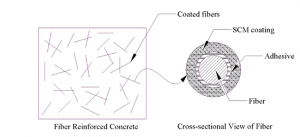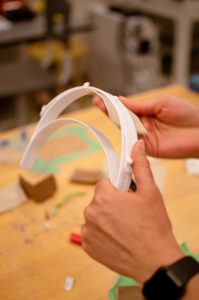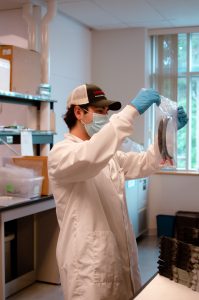The University of Victoria (UVic) is a top research school in Canada, and faculty members have a reputation for conducting innovative research that makes a global impact. An industry-academic partnership is a collaboration between a company and a researcher to optimize a new technology. The partnership can develop two ways: 1) A company may have a new technology that needs validation through lab work and academic expertise. 2) A researcher may need optimization of a technology developed in their lab through industry testing and deployment. These partnerships can be an excellent tool to enhance a company’s research and development (R&D), and discover solutions to hard-hitting issues within a specific industry. Partnerships are a mutually beneficial relationship where both parties come together to create change.
Industry-academic partnerships are facilitated by Research Partnerships and Knowledge Mobilization (RPKM) at UVic. The RPKM houses UVic’s Industry Liaison Officers (ILOs) who are passionate about innovation, help connect and foster industry-academic relationships, manage intellectual property (IP), support start-up companies, and assist with bringing new technologies to commercialization. ILOs strengthen partnerships by bringing their savvy business and IP knowledge to both parties. The first step in beginning an  industry-academic partnership is contacting an ILO with a new idea. They can connect you with relevant researchers to develop the innovation or highlight technologies ready for commercialization that offers a solution to common problems within your industry. Partnerships can begin early in the research phase, part way through development when a technology needs to be optimized, or when the technology is ready for licensing.
industry-academic partnership is contacting an ILO with a new idea. They can connect you with relevant researchers to develop the innovation or highlight technologies ready for commercialization that offers a solution to common problems within your industry. Partnerships can begin early in the research phase, part way through development when a technology needs to be optimized, or when the technology is ready for licensing.
Protecting the IP of the industry partner and researcher is a critical component of a partnership. This is protected through a Non-Disclosure Agreement (NDA). An NDA protects technology specific know-how, trade secrets, proprietary information, and protects all non-public information of the technology and business. This agreement is valid for a term agreed upon by both parties. In addition, a Sponsored Research Agreements (SRA) may be signed. The SRA will provide details on budget, deliverables and the IP arrangements that are agreed to by the company and lead researcher.
One of the major benefits of an industry-academic partnership is the opportunity to secure funding. When researchers and industry partners utilize grants, they can fund substantial portions of their projects. The most common type of funding is a leveraged cost sharing model. Here, the research cost is shared by a funding agency and the industry partner, where the ratio depends on factors such as research stage, company size, and type of grant. Depending on the type of grant the industry cost can include in-kind contributions. These contributions include anything that the partner supplies that is not cash, such as access to state of the art equipment and research materials. Below is a breakdown of available funding options for different types and stages of projects.
Early Stage Funding
The Alliance grant supports research that will generate knowledge, benefit the Canadian economy, support public policy, and draw on diverse perspectives. The grant can be awarded to a researcher with at least one industry partner. The role of the partner in this grant is flexible. They must assist in cost sharing and be involved in one of the following roles: active participation in research, utilize research results, or mobilize knowledge to ensure research has an impact. There are two funding options for the alliance grant, both options have variable lengths of 1-5 years with different criteria and funding levels.
Option 1: for small and large private, public, non-profit companies or government organizations with funding goals between $20,000 and $1 million. Cost sharing depends on the size of the company, where NSERC will fund 50% if the company has over 500 employees or 66% if it has under 500.
Option 2: for public, non-profit, and private companies who can work to make a societal challenge, collaborate in a way to include societal perspectives, and demonstrate how the developed technology can be used by industry specific end-users. This grant offers funding in the range of $30,000 – $100,000 in the initial phase, $20,000 – $200,000 after initial phase. If the partner is public or non-profit NSERC will cover 100% of the funding cost, if the partner is private NSERC will cover 90% of the funding cost. This program is highly competitive.
Mitacs Accelerate funding supports hiring a student or post doc for a paid internship to work on a targeted, industry specific research project. The project costs are split between Mitacs and the industry partner equally, starting at $15,000 per four month term ($7,500 each). Undergraduate students can complete two terms, graduate students can complete four, and PhD students can complete up to eight.
Mid Stage Funding
Innovate BC promotes market driven industry-academic research, strengthening partnerships, supporting talent development, and stimulating BC’s economic growth. Their funding award, Ignite, supplements a research project that has already secured funding from an industry partner and is well into the research phase. Ignite will share 33% of project costs up to $300,000. To be eligible a partnership must be able to demonstrate that their research solves a significant problem in industry and that it will be commercialized within 3 years.
Late Stage/Pre-Licensing Funding
NSERC Idea to Innovation Grant
The Idea to Innovation (I2I) grant is a late stage research grant that serves to aid the last steps before commercializing a new technology. In the early stages of the grant where there is still some research to finish, a letter of intent to transfer or license the completed technology is required from an industry partner. Here, NSERC funds 100% of project costs up to $125,000. In the later stages when the technology is being commercialized, the industry partner will lead the development of a technology transfer plan. NSERC will share 66% of project costs in this phase, up to $125,000.
When industry and academics collaborate, expertise from both sides comes together to better execute the development of a technology. Researchers can help develop and validate industry ideas, while industry can support research and commercialize technologies and vice versa. This is facilitated by the ILOs who serve as a bridge between industry and academics. They bring industry and academics together, market technologies, help explore and secure funding, and guide both parties through securing IP. Industry-academic partnerships strengthen the development of novel ideas, and bring expertise from a variety of areas to facilitate the commercialization process. For more information on industry-academic partnerships and connecting with an ILO please visit the UVic RPKM website.
Written by Morgan Cummingham (RPKM Co-op Student) and Liz Bueckert.

 [about 8% of the total global carbon dioxide]. There are many other SCMs some of which are very expensive. There is also silicafume which is an exceptional material that has the ability to remove lime. Limestone is put into the mixture to make concrete, but the limestone turns to lime and actually makes concrete less durable. When you add silicafume to the concrete it reacts with the lime and reduce the amount of lime in the concrete. What is great is the reaction between lime and silica produce a really amazing product that reduces deterioration.
[about 8% of the total global carbon dioxide]. There are many other SCMs some of which are very expensive. There is also silicafume which is an exceptional material that has the ability to remove lime. Limestone is put into the mixture to make concrete, but the limestone turns to lime and actually makes concrete less durable. When you add silicafume to the concrete it reacts with the lime and reduce the amount of lime in the concrete. What is great is the reaction between lime and silica produce a really amazing product that reduces deterioration. around the clock, to churn the headbands out as quickly as possible.
around the clock, to churn the headbands out as quickly as possible. are packaged into a transparent plastic bag along with the elastic band. In addition, to disinfect the kit further, the kits are each placed into an Ultraviolet sterilization cabinet for 15 minutes.
are packaged into a transparent plastic bag along with the elastic band. In addition, to disinfect the kit further, the kits are each placed into an Ultraviolet sterilization cabinet for 15 minutes.